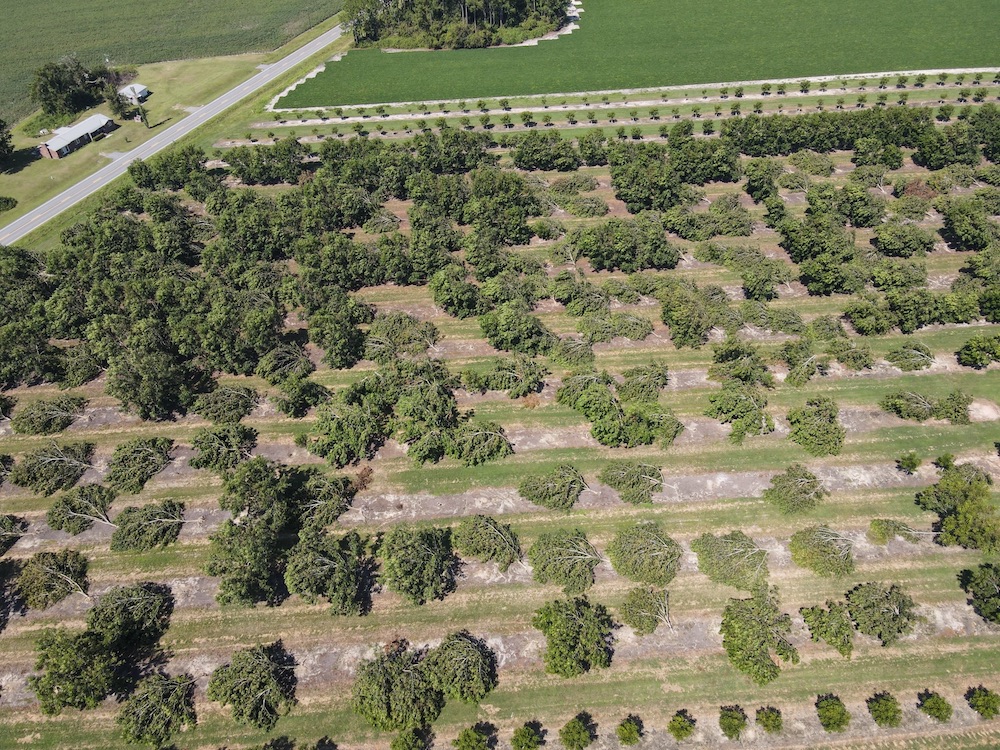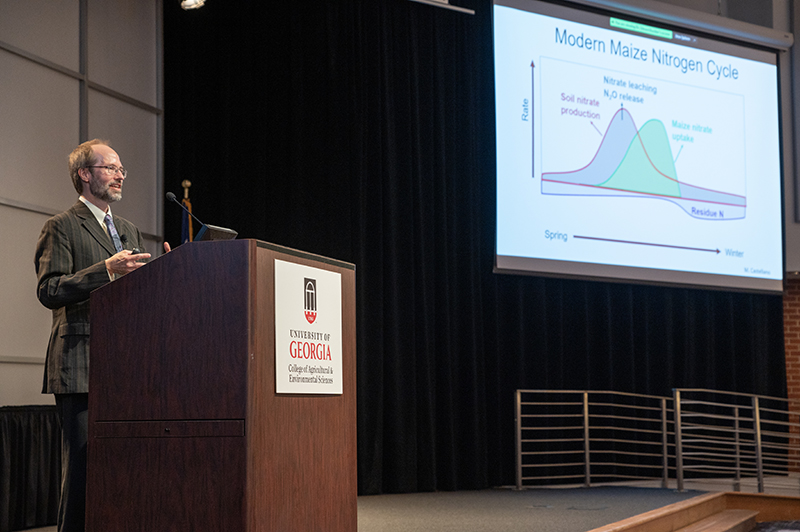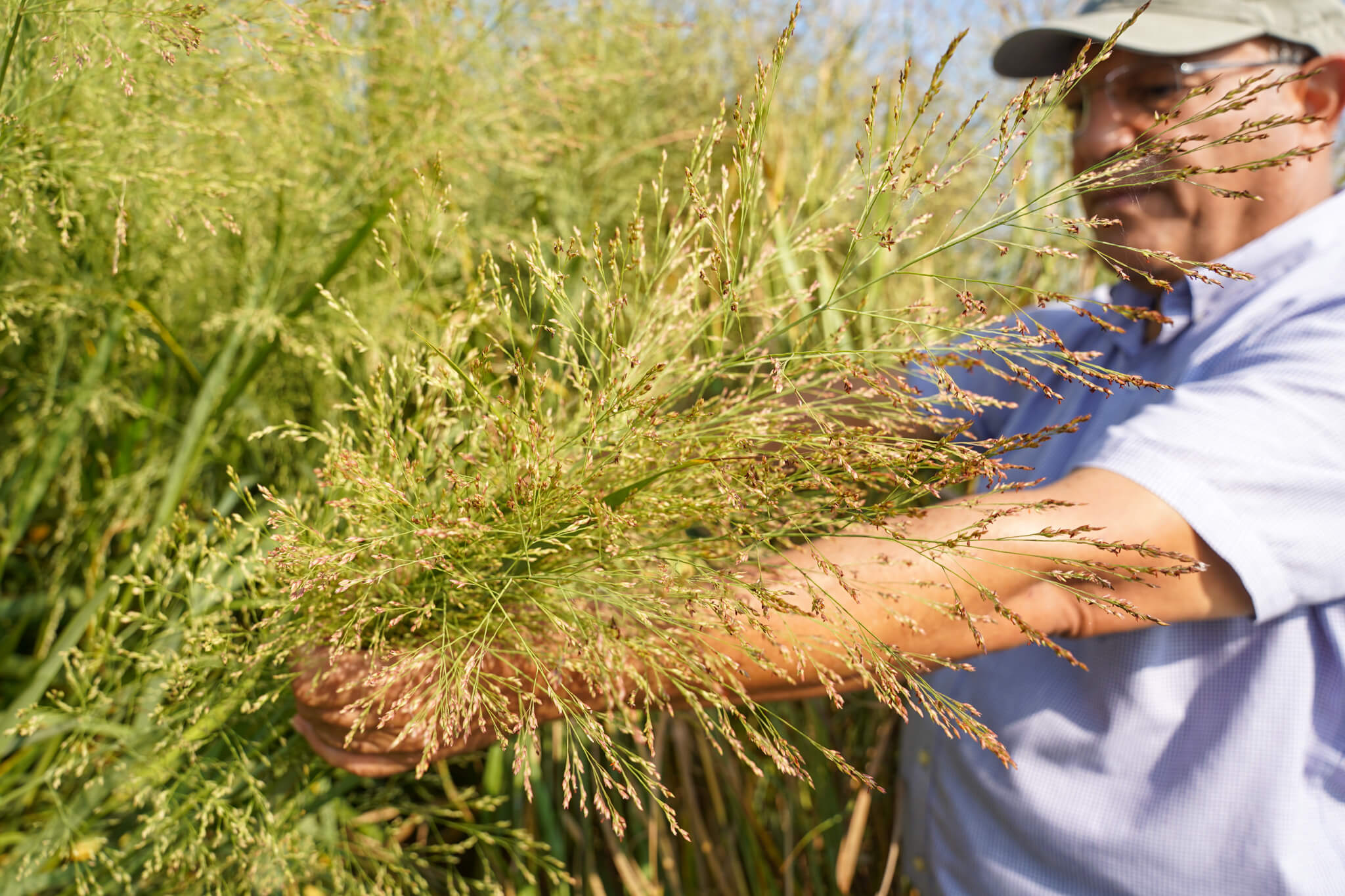Summer began in Georgia with warmer than normal temperatures throughout the state and shows no signs of relenting before fall.
The hotter than normal temperatures with low rainfall led to an expansion of drought over the month and the introduction of extreme drought to two regions in northern Georgia by June’s end.
Because of the hot temperatures and lack of rainfall, drought expanded across the northern half of the state. By the end of the month, nearly half the state was in abnormally dry conditions or drought. Severe drought increased from 4 to 25 percent of the state, and two small areas of extreme drought were added. The last time Georgia had any extreme drought was in February 2013.
The dry conditions had many impacts on agriculture. Pastures essentially shut down in northern parts of the state, and cattle farmers were feeding cattle hay because the grazing was so poor.
Dryland crops suffered from the lack of moisture and the hot conditions, particularly corn in higher locations. Some areas were so dry that late soybeans and other crops could not be planted. Some farmers reported having trouble producing enough vegetables for local markets.
Urban landscapers reported that lawns were getting “crunchy” and required extra irrigation. Wine producers, however, noted that the wine grapes this year are almost free of fungal diseases due to the low humidity, and there are less mosquitoes than usual due to the lack of rain.
Georgia temperatures were well above normal in June, ranging from one to almost four degrees above the 1981-2010 average. The hottest areas were in the northern part of the state.
In Atlanta, the monthly average temperature was 81.0 degrees Fahrenheit, 3.7 degrees above normal; in Athens, Georgia, 80.7 F, 3.2 degrees above normal; in Columbus, Georgia, 81.2 F, 1.4 degrees above normal; in Macon, Georgia, 81.3 F, 2.4 degrees above normal; in Savannah, Georgia, 82.1 F, 2.2 degrees above normal; in Brunswick, Georgia, 81.9 F, 1.6 degrees above normal; in Alma, Georgia, 80.6 F, 0.9 degrees above normal; in Augusta, Georgia, 80.5 F, 1.9 degrees above normal; in Albany, Georgia, 81.9 F, 1.4 degrees above normal; in Rome, Georgia, 79.4 F, 3.4 degrees above normal; and in Valdosta, Georgia, 80.9 F, 1.5 degrees above normal.
Macon set a new record high temperature of 101 F on June 17, breaking the old record of 100 F set last year. Brunswick also set record highs of 98 F on June 13 and June 17, breaking the old records of 97 F set in 1998 and 1964, respectively. Alma set record high minimum temperatures on June 13 and June 16 with 77 F and 76 F, topping the old records of 76 F and 74 F set in 2013 and 1976. Several other high temperature records were tied during the month.
The highest monthly total precipitation recorded by the National Weather Service was 8.40 inches in Valdosta, at 2.34 inches above normal, and the lowest was in Macon at 1.87 inches, 2.17 inches below normal. Atlanta received 3.26 inches of precipitation, 0.69 inches below normal; Athens received 4.09 inches, 0.09 inches below normal; Columbus received 2.15 inches, 1.57 inches below normal; Savannah received 6.96 inches, 1.01 inches above normal; Augusta received 2.87 inches, 1.85 inches below normal; Alma received 5.20 inches, 0.18 inches below normal; Brunswick received 5.69 inches, 0.85 inches above normal; Albany received 4.41 inches, 0.53 inches below normal; and Rome received 2.28 inches, 1.82 inches below normal.
The southeastern part of the state was the wettest, where rainfall from Tropical Storm Colin fell June 6 through June 7. In those areas, that single day of rain made up 30 percent or more of their monthly total. Conditions were even wetter in Florida, where the center of the storm passed.
The highest single-day rainfall, according to Community Collaborative Rain, Hail and Snow Network volunteers, was 5.62 inches, measured north of Boston, Georgia, in Thomas County on June 7, followed by 5.27 inches at Thomasville, Georgia, on the same date Colin passed. The highest monthly rainfall, 11.23 inches, was measured northwest of Savannah in Chatham County, followed by 10.75 inches southwest of Bloomingdale, Georgia, in the same county. Volunteers in Thomas County reported almost 10 inches for the month.
Severe weather was observed on 16 days during the month. The most notable was a brief tornado touchdown, identified by videotape, in Reed Bingham State Park in Adel, Georgia, in Cook County, on June 26. Widespread wind damage also occurred throughout the state on June 17.
The outlook for July shows a continuation of above-normal temperatures, starting with a very hot week. The month will start dry, but rain may pick up in the last two weeks. The outlook for July through September shows that above-normal temperatures are likely to continue. The best chances of rain will be near the Gulf of Mexico due to tropical activity, which is expected to be more active than usual this season.
For more information, see the Climate and Agriculture in the South East blog at blog.extension.uga.edu/climate/, blog.extension.uga.edu/climate/, or visit gaclimate.org. Email weather and climate impacts on agriculture to be shared on the blog to pknox@uga.edu.






.jpg)